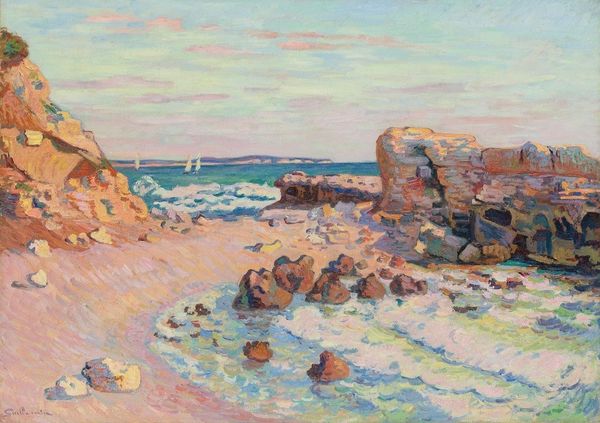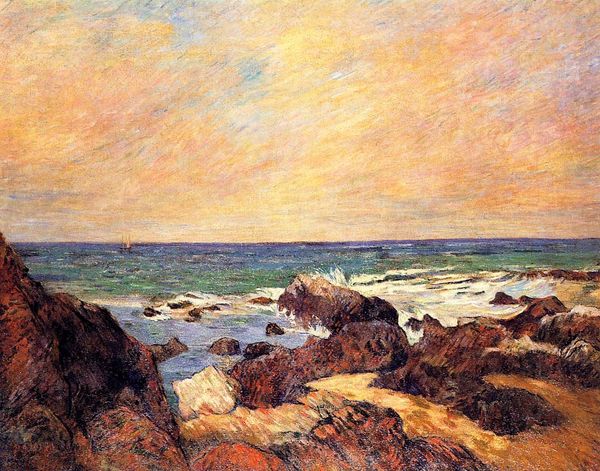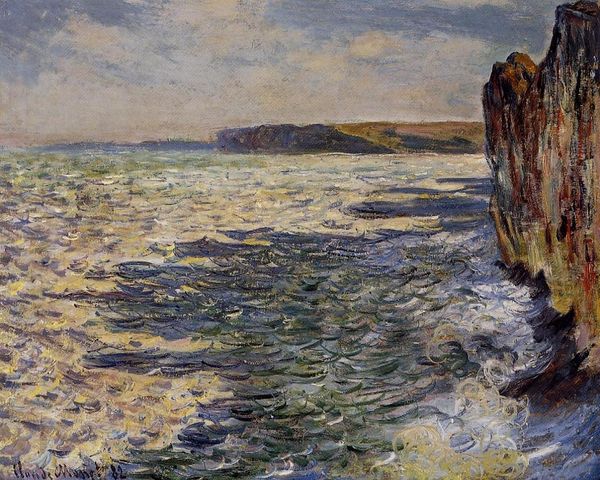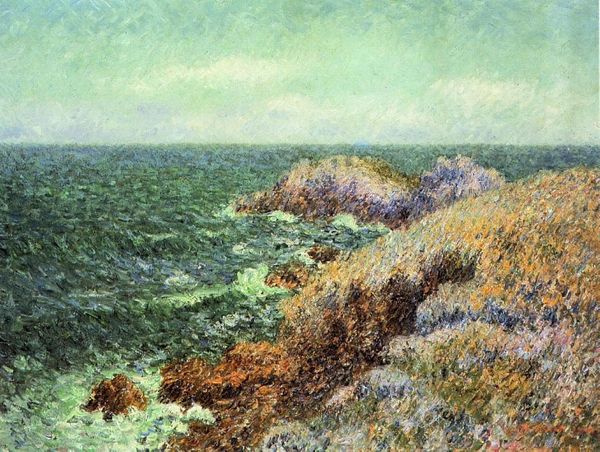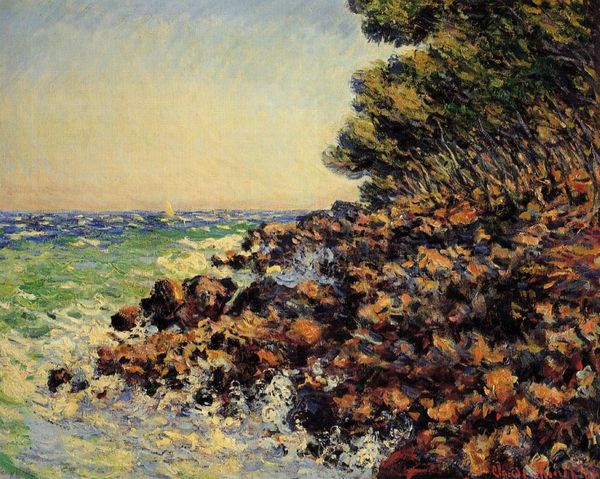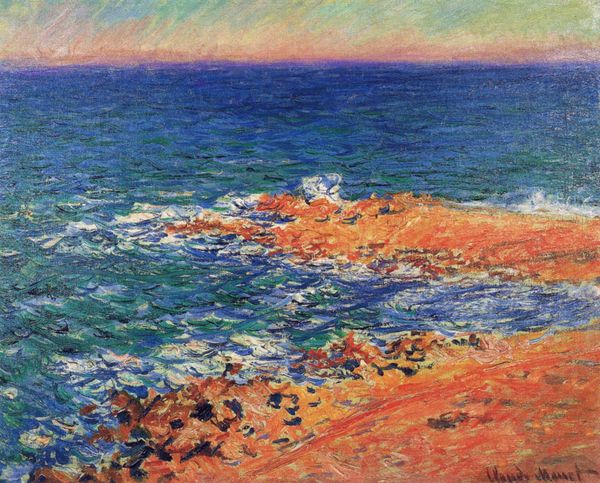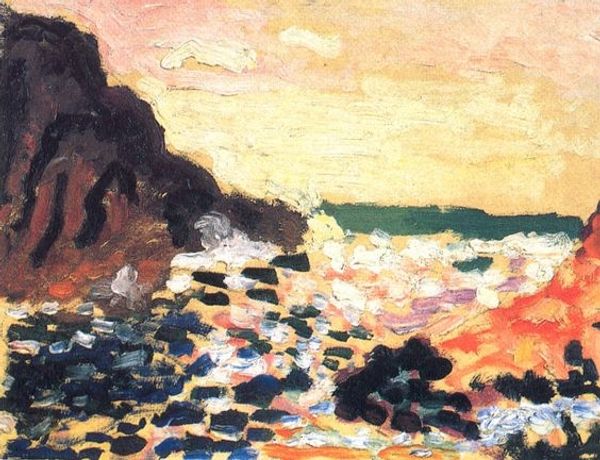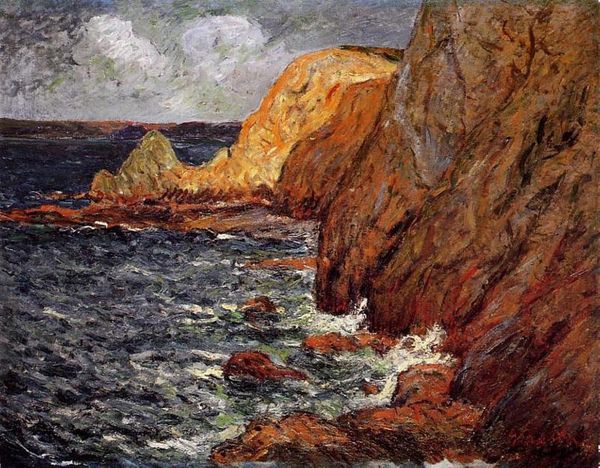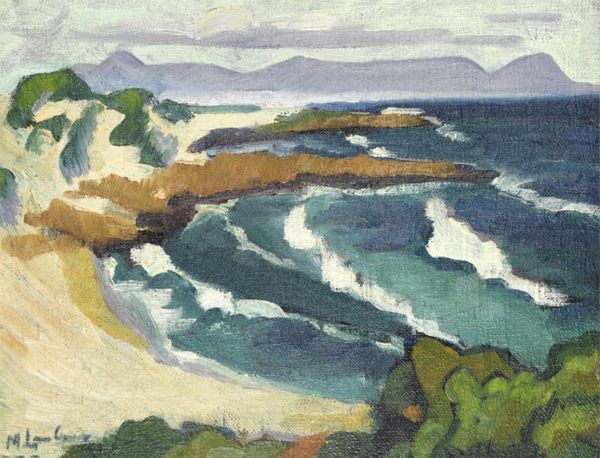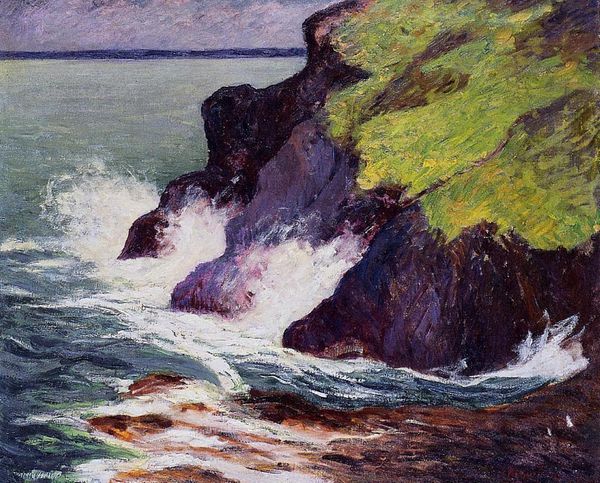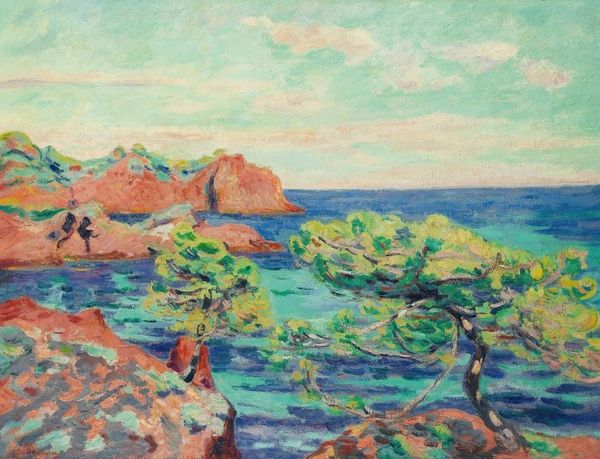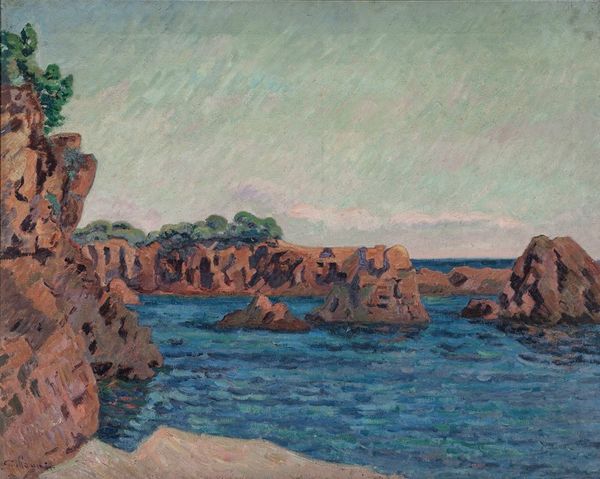
Dimensions: 54.3 x 64.8 cm
Copyright: Public domain
Curator: This is Roderic O'Conor's "Promontory, Brittany," an oil painting completed in 1898, and it's currently held at the Bristol City Museum and Art Gallery. Editor: The painting immediately strikes me with its earthy warmth. The bold strokes of orange and pink dominate the foreground, contrasting with the cool blues and greens of the sea and sky. It's both inviting and slightly unsettling in its color choices. Curator: The Breton landscape was a major draw for artists at the turn of the century. O’Conor was part of the Pont-Aven School, influenced by Gauguin and a move towards synthetism and more subjective expression. These artists were deliberately reacting against what they saw as the strictures of academic painting. Editor: Indeed, we see O'Conor's experimentation with colour. These rosy pinks and sun-baked oranges are not the "realistic" hues one expects, yet they evoke something quite primal. The promontory feels like a place where the earth exhales. There's an enduring sense of natural, weathered permanence that’s almost timeless, wouldn't you agree? Curator: Absolutely, and it's important to consider the institutional context, too. The late 19th century saw a growing fascination with the rural and "authentic" cultures on the European periphery, but there's always the danger of romanticizing or appropriating. However, I do think O'Conor demonstrates respect in trying to create images and work within the region’s legacy rather than completely displacing Breton culture. Editor: Looking closer, the waves crashing against the rocks become visual symbols of the unyielding power of nature and the fleeting nature of time. In that light, is the use of rough, almost impatient brushwork trying to portray the emotional urgency of facing raw nature, a metaphor for the spiritual? Curator: The artist would likely want you to reach your own interpretation of its imagery. Editor: Fair enough. This canvas certainly holds enduring aesthetic power. I imagine anyone, regardless of era, would connect deeply to this scene. Curator: Seeing the original painting, even in reproduction, really illuminates what a revolutionary movement Impressionism really was!
Comments
No comments
Be the first to comment and join the conversation on the ultimate creative platform.
